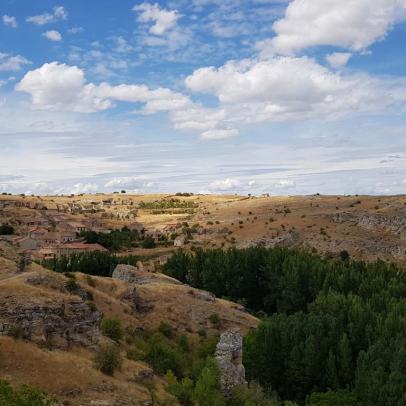The extreme environmental conditions in the limestone moors in this area reduce the growth of vegetation, which is limited to shrubs and pastures, with a few isolated stands of holm oaks. The poor limestone soils rapidly percolate rainwater after a storm, which means that it is difficult for permanent streams to form, as they depend on the presence of springs or resurgences. Small streams, like the Retortillo rivulet and the River Talegones appear at the bottom of canyons carved in the Jurassic limestone, where the greater humidity and thicker soils allow the growth of vegetation adapted to the conditions. In this way, at the bottom of the ravines, we can find black and white poplars, maples and oaks, whereas on the sunnier hillsides, holm oaks fight to extend their dominion in the moors. Escarpments are home to communities of rock birds, like griffon and Egyptian vultures, choughs and rock thrushes.
The stony moors, without any human pressure because of the gradual abandonment of farming activity, are the refuge of national importance for the conservation of such unusual birds as Dupont’s lark and the little bustard, which attract hundreds of ornithologists every year.
- Access by car: it is not accessible by vehicle. We recommend you park at the top of the town as the streets are narrow and steep.
- Access for people with limited mobility: there are no infrastructures adapted for people with limited mobility.
- Legal protection: the whole route is in the Natura 2000 network: Site of Community Importance ES4170148 (Heights of Barahona) and the Special Protection Area ES0000203 (Heights of Barahona).
- Seasonality: spring and autumn are the best times for bird-watching. Visitors should avoid the coldest months because the presence of ice may make walking difficult. Recommendations, what to see and do: the ruins of the Retortillo Mill are at the end of the footpath. Visitors should take binoculars to identify the variety of birds that live in this area.
Rev.: PAB 05.05.23


